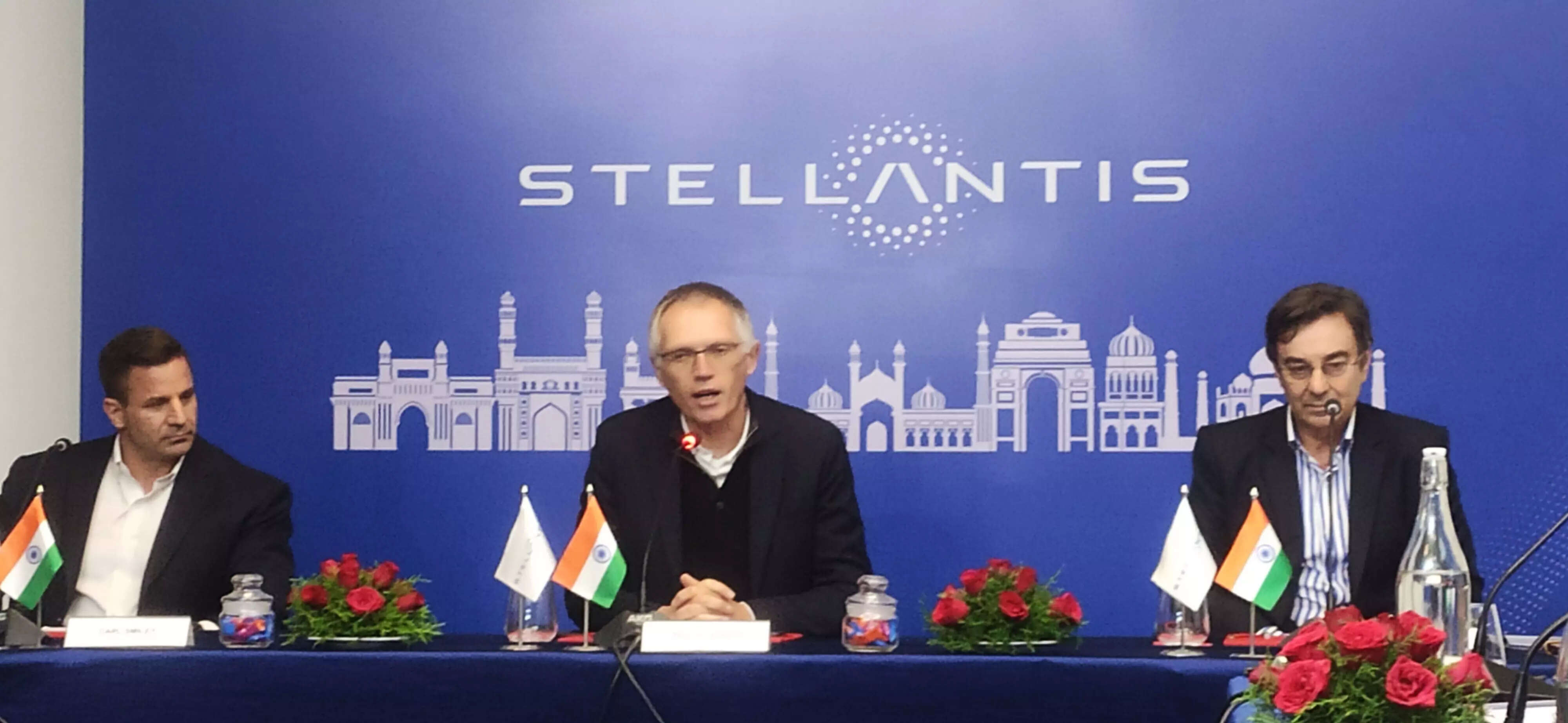
The Citroen brand of Stellantis is yet to make an impact on the Indian market of ICE vehicles. But it doesn’t want to wait any longer to join the nascent Indian electric vehicle (EV) market, and that too in a big way. It expects that the ‘affordable’ Citroen C3 EV scheduled for launch at the “beginning” of 2023 to do the magic. Carlos Tavares, global CEO of Stellantis, believes that gaining a higher share in the EV space now will help the company in the long run than in the ICE vehicle market, when the PV market goes fully electric.
The Indian middle class population is the constituency that Stellantis wants to appeal to with the EV version of the C3. “We are trying to work very hard on that, to offer an affordable price for an EV that the middle class can buy,” Tavares said during a media roundtable in Chennai.
The Indian middle class is a huge section of the country’s population. According to a reported survey by an economic research firm People Research on India’s Consumer Economy, the share of middle class (with annual household income of INR 5 lakh – INR 30 lakh has more than doubled to 31%, from 14% in 2004-05. This figure is expected to touch 63% by 2047, India’s 100th year of independence.
The price of the Citroen C3 EV could be around INR 10 lakh, or even less, considering that 40% to 50% is the incremental cost of producing an EV, according to Tavares. The Citroen C3 sports an entry level price tag of INR 5.88 lakh and it could be a key milestone in Stellantis’ journey of its EVs achieving cost parity with equivalent ICE vehicles by 2026.
We are trying…to offer an affordable price for an EV that the middle class can buyCarlos Tavares, global CEO, Stellantis
In the quest for an affordable EV, Tavares wants suppliers also to contribute. The global industry leader expects all tiers of suppliers together to share 85% of the incremental production cost of an EV since that’s the cost share of bought-out parts in a vehicle.
Stellantis, which also has lined up EVs to be launched under its Jeep brand, says it would prefer to have localisation level upwards of 90% for its electrics but it doesn’t see that opportunity in India yet. The Citroen C3, produced at Thiruvallur plant near Chennai, has reached a level of 95% to 98% localisation.
The fourth largest automotive Group bets on India’s growth story, even though a slowdown is budgeted for next year. While counting Europe to be at the highest risk to an economic recession, followed by the USA, Tavares bets on India to be “not at risk”.
As for Stellantis’ operations in the country, Tavares says it’s churning out profits though not all product lines are not in the black. He credits it also to a frugal investment approach. For example, the transmission joint venture plant saw the installation of some refurbished machinery shifted from outside India. “Our breakeven point is 40% of net revenue,” says Tavares.
Speaking a couple of hours before leaving the country, Tavares expressed his bullishness about India also as a software technology development hub. At the global level he has a serious concern. That is of a “growing fragmentation” in the world mainly in terms of country or region-specific industry incentive policies which may also go against globalisation. The end result could be high inflation and price increase, leading to the middle class “not be able to afford automobiles”.
And that could pose a big hurdle for industry players in the electrification journey. “If an EV is not affordable, you are going to sell it only to the wealthy people, in limited volumes. And that is not going to help the planet. So, it will be marginal,” Tavares said.
During his two-day visit to India, his second as Stellantis CEO, Tavares visited the Group’s transmission JV plant in Hosur, and the car plant in Thiruvallur. He is leaving with one core target for the teams in India – quality, to build the business. “Quality is a qualifier. It’s not one of the parameters for performance,” says Tavares, using the analogy of qualifying to be in a race.
Also Read:
















